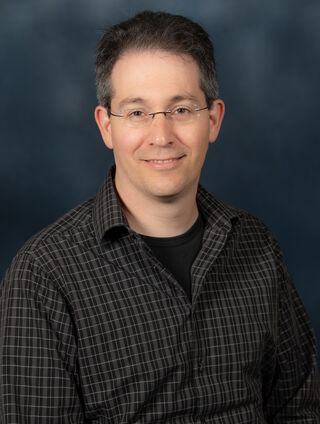Free Will
Building and Enhancing Resilience Through Free Will
Research on the neuroscience behind free will helps us cultivate resiliency.
Posted March 3, 2021

Guest post by Uri Maoz
Both building and enhancing resilience typically require people to change their approaches and their behaviors. A key question for many who would like to build resilience is therefore the extent to which such changes are possible and to what extent these changes are up to them.
Although resilience typically requires conscious choices and effort, we also know that humans operate in a world governed by physical laws and that people are affected by genetics, by the structure and function of the brain, by their upbringing, and so on. If humans are sometimes, or perhaps even often, like puppets on a string, moved by forces beyond their imminent understanding or control, what chance do they have to bring about the changes in their lives that would promote current well-being and future resilience?
Say that you are suffering from a debilitating depression following a traumatic event. To what extent can you intentionally control factors that promote resilience: exercise, active coping with trauma, or the keeping up of friendships and family relationships for social support? And how much is outside of your control, despite your best wishes or efforts? These questions tie resilience to the much older and long-debated notion of freedom of action and of decision—or, in other words, to the millennia-old debate on free will. A key question in that debate is, to what extent are humans able to chart their own course in life unbound by outside influences?
The answer to that question has profound consequences. For example, our legal system is predicated on the idea that people are generally free to make their decisions and choose their actions and hence are responsible for those actions. The consequences range further to economics, religion, psychology, and, of course, private individual experience, such as being able to be more resilient or hopeful in difficult times.
While the extent of human freedom of action and choice has been studied by philosophers and theologians for millennia, over the past few decades, neuroscientists have joined the fray and begun investigating the neural underpinning of volition, intention, and consciousness. More recently, these neuroscientists and philosophers have even begun working together, forming the field now termed the "neurophilosophy of free will."
Interestingly, the participation of neuroscience in the free-will debate began with skepticism about free will. In the mid-1960s, Kornhuber and Deecke demonstrated that self-paced movement in humans was often preceded by electrical activity that could be detected at the scalp. This neural precursor of voluntary action was termed the “readiness potential." Then, in the early 1980s, Benjamin Libet and colleagues recorded the readiness potential while asking participants to time when they first had an urge to flex their wrist. Importantly, though perhaps counterintuitively, the onset of the readiness potential in that experiment clearly preceded the time when participants reported they first had a conscious urge to move. So, it seemed that the decision to move, in that experiment at least, began unconsciously.
These results were replicated and expanded, leading many neuroscientists to claim that humans generally made decisions unconsciously. Claims then circulated that, even though we feel that our decisions and actions are generally up to us, science had proven that it is not so, that free will is just an illusion. It was suggested that we become aware of our body’s movement only after the fact, and we then narrate to ourselves an illusory “experience” of having caused the movement.
However, while some scientists were successfully replicating and expanding Libet’s results, other scholars cast doubts on them. Among other things, neuroscientists showed that measuring the onset of decisions is more complex and less accurate than Libet and colleagues appreciated. It was also demonstrated that the readiness potential might be a byproduct of the way that it was measured rather than a true harbinger of voluntary action. Philosophers pointed out that the Libet experiments focused on arbitrary, purposeless decisions—such as flexing the wrist at an arbitrary time for no reason or purpose—and that there was no evidence that their results could be generalized to important, deliberate decisions that had been long at the center of the free-will debate.
This is where we stepped in. We are a group of neuroscientists and philosophers who are together trying to understand how the brain enables conscious, causal control of human decisions and actions. In particular, colleagues and I ran an experiment in which participants either pressed buttons arbitrarily or pressed them deliberately to decide which charity would receive $1000. We found that, while the readiness potential did appear before arbitrary decisions, it was strikingly absent before deliberate decisions. So, might it be that the Libet results hold only for purposeless, trivial decisions (if at all)?
The various conceptual and methodological problems with the Libet experiments and with the interpretation of their results mean that they do not provide strong evidence that all decisions are made unconsciously. However, it is likewise clear that much of our brain activity, including many decisions, are often unconscious. The unconscious neurochemistry of attraction and bonding is involved in our choice of partners, and hormones strongly influence the thoughts and emotions of teenagers, expectant parents, and aging grandparents. We generally appear hardwired to prefer sweet tastes over bitter ones. We might arrive home after a long drive unable to remember choosing to stop at every stop sign and red light—although we did. More generally, our thoughts and ideas often appear unbidden.
So, while we may not yet have a complete or clear picture of how the brain enables human decision-making, nor to what extent particular choices are made freely or independently, what we can say for now is that today’s best neuroscience knows of no true impediment to the ability of people to make decisions and act according to their best beliefs and desires. You are free to consciously decide to build resilience or a hopeful attitude and enjoy a better life.
(I am thankful to Dr. Marta Napiorkowska, who helped write this piece.)

Uri Maoz, Ph.D., is an Assistant Professor of Computational Neuroscience and Psychology at Chapman University and a member of the Brain Institute there as well as a Visiting Professor at the University of California Los Angeles and the California Institute of Technology. He has published on computational and other aspects of volition, decision making, and moral choice. He currently directs a project on the neurophilosophy of free will by the John Templeton Foundation and the Fetzer Institute. His co-edited book, FREE WILL: Philosophers and Neuroscientists in Conversation, will be published by Oxford University Press later this year.




